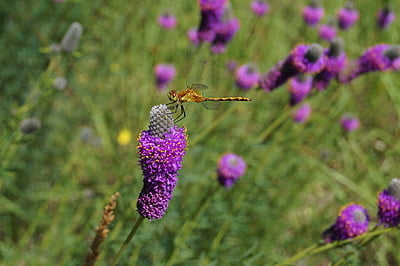








Dalea purpurea (Purple prairie clover)
Purple prairie clover Description:
Dalea purpurea, commonly known as Purple prairie clover, is a herbaceous perennial plant in the Fabaceae family. It is native to North America and can be found throughout the central and western parts of the continent. The plant typically grows to be about 1-3 feet tall, with a spread of up to 18 inches.
Dalea purpurea produces dense, cylindrical spikes of purple flowers that bloom in mid to late summer, typically from July to September. The flowers are attractive to butterflies and other pollinators, making it a popular choice for butterfly gardens and other pollinator habitats. The plant is also a nitrogen fixer, which means it has the ability to convert atmospheric nitrogen into a usable form for other plants.
Purple prairie clover is a drought-tolerant plant that is well adapted to the prairies and other open habitats. It is often used for ecosystem restoration and soil stabilization projects, as it has a deep root system that helps to prevent erosion and improve soil health. The plant is also a popular choice for native plant landscaping, as it is low maintenance and requires little watering or fertilizer once established.
Native Range:
Purple prairie clover ranges from as far West as Washington state all the way to Georgia. That said, it is most commonly found in the central United States from Minnesota to Texas.
Standard Plant Information:
Plant Height: 1' - 3'
Bloom Time: June - August
Preferred Habitat: Does well full sun. Often found in dry prairies and rocky areas.
Stratification: NA, S
